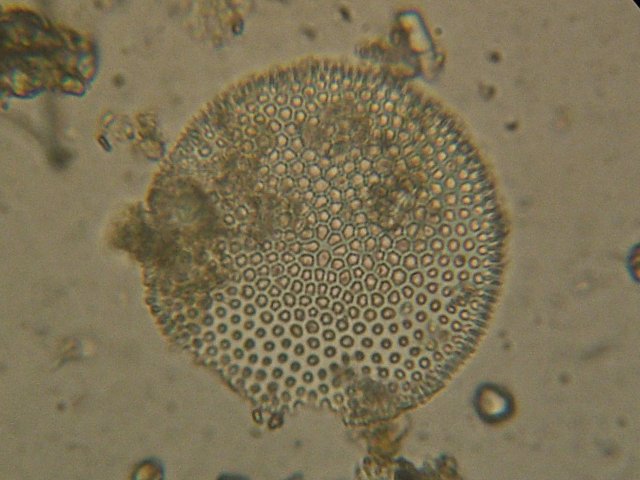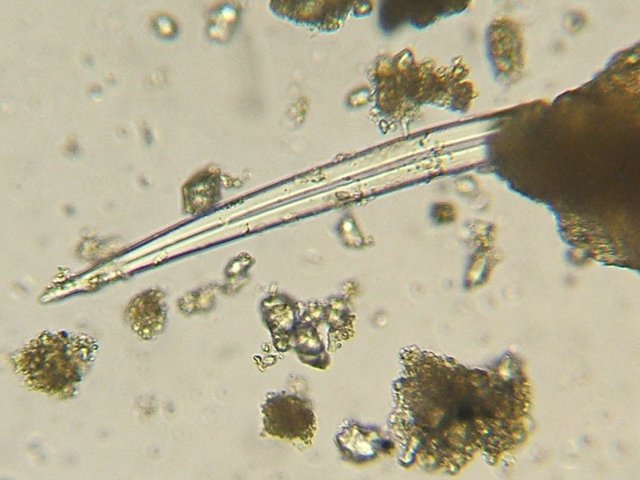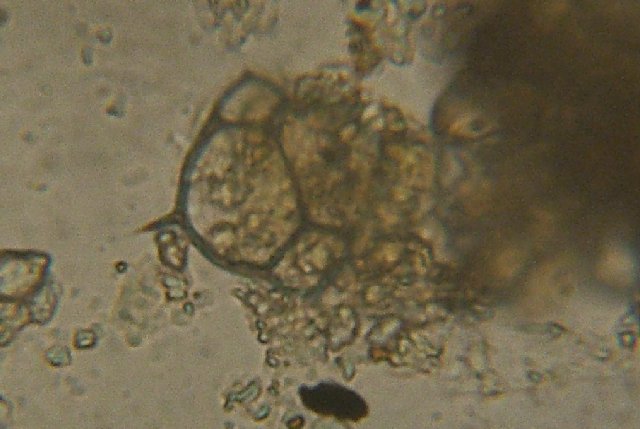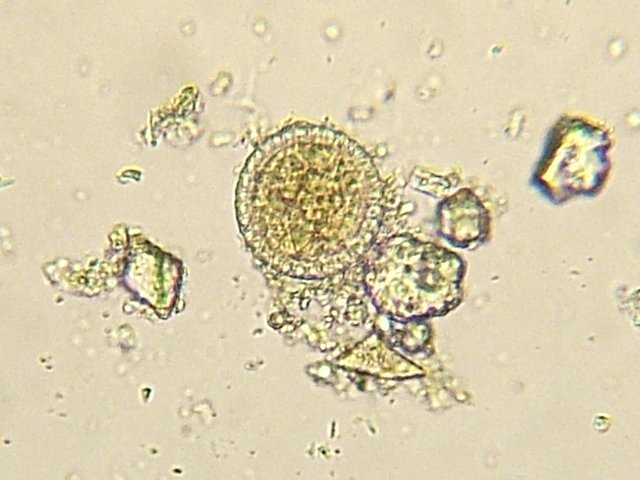
Neophyte explores Mioceneby Charles Suslavage USA |
After acquiring a microscope the novice has no hint as to the direction of the journey ahead. A world of small wonders lie along a meandering path of discovery. Searching for microscopic fossils was an activity unknown to this novice. When thinking of fossils, what first comes to mind, T-Rex of course, big bones and vicious teeth, Brontosaurs, again big, very big. Fossil seashells were known but again they are something you hold in your hand. A fossil tooth of the Great White Sharks ancestor the forty foot monster Megalodon is an awesome vision. Replacing the geologists rock hammer with a microscope to find fossil's was unimagined.
My introduction to microfossils came by chance not by design. From a Micscape acquaintance and friend I learned that it was possible to obtain fossil bearing matrix from North Carolina through a fossil collector living in Florida. The matrix is from Aurora North Carolina of the Miocene epoch, 23.8 to 5.3 mya, Yorktown Formation. I had to get me some of this! As a youngster I collected model dinosaurs and as time moved along I have visited several museums here in the US and enjoyed viewing their paleontology collections and of course a small fossil purchase at the museum gift store.
After ordering matrix I waited and eventually two pounds of washed matrix arrived guaranteed to contain microfossils with brief instructions and a fossil key picturing some of the fossils that may be found. Use of a good magnifying lens was recommended. Following the instructions I pawed my way through the material with a quality magnifying lens to find bits of coral, small shells, sea urchin spines and fossil sharks teeth. It was really a lot of fun. More fun was to follow when I again searched through this Miocene debris with a dissecting microscope. I was surprised at all the interesting objects missed with the magnifying glass, tiny sharks teeth, fish teeth, fish bones, small gastropod fossils. This was exciting.

The fossil matrix I had acquired was washed, the gravel, any clay, small debris is removed. I did find some matrix packed into some bivalve shells that had not been washed away. Placing these shells in a small vessel with distilled water I soaked and then cleared the material from the shells. After removing the shells from the bath there was material suspended in the water.
So lets pipet some of this floating debris onto a slide and find foraminifera. Actually, I did not think I would find any foraminifera and I didn't. No foram's were to be found but I was not disappointed with what I did find. Three types of objects were found with surprising ease. These are centric diatom fragments, sponge spicules, and silicoflagellate tests. The diatom fragments and the sponge spicules were plentiful and easy to locate but very few silicoflagellates were to be found.
Two interesting problems arise, one, how to clear away the debris from the microfossils, especially from the silicoflagellate tests, and two, how to measure the objects viewed, small they are but just how small? A third issue is how to collect and store these microfossils? Mounting these little treasures on a slide sounds great but how do you capture them for mounting once located? It seems this road is full of adventure with a healthy supply of speed bumps and potholes..

Centric Diatom, 1000x.

Sponge Spicule, 1000x.

Silicoflagellate, 400x.

Unidentified, 1000x.
What do I know about the age of the subjects pictured above? Three of the four pictures are certainly aquatic. I have trust in my fellow man so I will except that the material hails from Aurora NC. As to the age it could be from the Miocene epoch or the earlier Pliocene epoch dating from 5.3 to only 1.8 mya. Aurora NC and all of Eastern North Carolina was under water about 20 million years ago but it did not flood or recede uniformly on Tuesday morning at 9 am 6000 years ago or 6 million years ago. Much of the fossil matrix coming from Aurora NC is collected at the huge phosphate mine run by Potash Corporation of Saskatchewan (PCS) and their bulldozers really don't care about which geologic strata are mixed as they uncover the phosphate deposits. So what age should be assigned to my microfossils? As an amateur and not a professional I can live with the simple answer - a million plus.
The author welcomes comments or suggestions.
This Web Page Created with PageBreeze
Free Website Builder
Please report any Web problems or offer general comments to the Micscape Editor.
Micscape is the on-line monthly magazine of the Microscopy UK web site at Microscopy-UK.